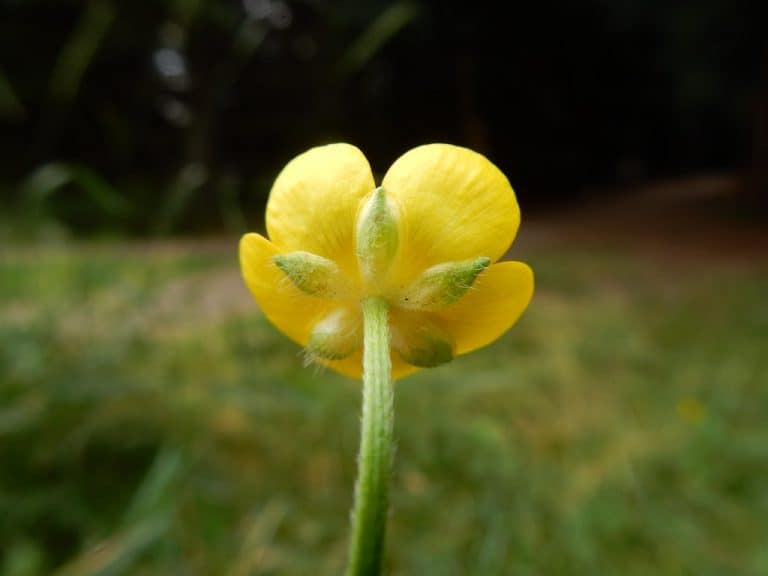

You are free to use, share and adapt any of the images on this page, under the condition we receive a followed backlink to our website as the image source.

This work is licensed under a Creative Commons Attribution 4.0 International License. The leaves and flowers have been crushed to treat headache, with the roots being used to treat diarrhea. This plant has medicinal uses, however, with the plant containing toxins, it is important that the plant is prepared correctly to avoid illness. The sap of creeping buttercup is known to be toxic to cattle. This plant attracts bees, butterflies and hoverflies which visit to feed on the pollen and nectar. They measure between 15mm – 60mm in length. The basal leaves have three leaflets, with each leaflet being deeply cut or lobed. Leaves: The leaves are dark green, can be smooth or covered in very fine hairs, occasionally covered with pale or dark flecks. The flowering season is between May and September. While this weed can grow in various conditions, it thrives in poorly-drained soil, quickly infesting soggy areas of your lawn or garden. They are borne singularly or in clusters and measure up to 25 – 30mm across, with each flower having 5 or 6 petals. Identificationįlowers: The glossy, golden yellow flowers are typical of most buttercups. Whilst holding the flower underneath the chin of another, if a reflection is seen, then this indicates that they like butter. The flowers were once used by children to see if another person likes the taste of butter. It spreads aggressively via over ground runners known as stolons and has a deep fibrous root system.

It prefers heavy, moist soils and a large presence of creeping buttercups is often an indicator that a site is suffering from poor drainage. It grows to a maximum height of 80cm and is most likely to be found in grassy areas, such as meadows, verges, hedgerows and turf. It’s considered a major turf weed by gardeners, as it’s very difficult to control and eradicate, once its established. Habitat: Grassland, hedgerows, roadside verges, turfĬreeping buttercup is a hardy, perennial wildflower with lovely, golden, yellow flowers and the most common of the buttercups. If a reflection is seen whilst holding it under someone’s chin, then it is said they like the taste of butter. Children like to use the flowers to see if their friends like butter. Creeping buttercup is easily recognised by its golden, yellow flowers.


 0 kommentar(er)
0 kommentar(er)
